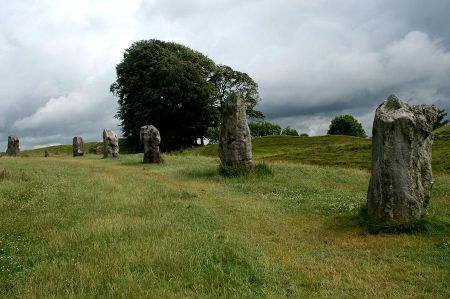The tribal organization of the Celts in Asia Minor
- Written by Portal Editor
In our article about the origin of the Celtic immigrants to Asia Minor, we had already roughly written about the local division of the tribes. Basically, the ethnic group of the Celts who immigrated to Asia Minor is also referred to as Galatians.
This group, which mainly settled in central Anatolia, is roughly divided into three tribes: the Tolistobogiians, the Tectosages and the Trokmerians. Each of these three tribes was in turn divided into four groups, each headed by a leader or village elder. The Galatians referred to their village elders as tetrarchs.
Three different tribes on the way to Asia Minor
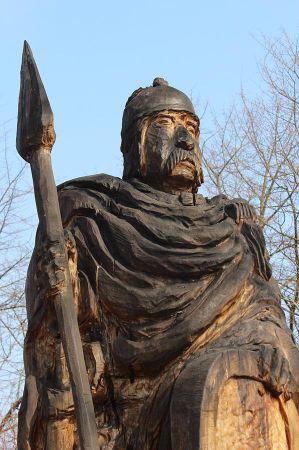 Because of the three tribes, there were therefore twelve tetrarchs, to whom in turn a priest and a general were subordinate. The general, in turn, had authority over two subordinate men, or officers, to use modern expression.
Because of the three tribes, there were therefore twelve tetrarchs, to whom in turn a priest and a general were subordinate. The general, in turn, had authority over two subordinate men, or officers, to use modern expression.
All named people formed the so-called Council of the Galatians (300 people), which decided on the orientation and occurrence of important points of discussion. The group of councils assembled at the appropriate time at the jointly designated meeting place, the drunemeton (also known as the sacred oak grove), where problems were discussed and solutions decided.
Later there were only three tetrarchs, each presiding over a tribe. Of course, this also led to a tussle among the tetrarchs, so that reason alone triumphed and in the future only one tetrarch was appointed, who subsequently also called himself king.
The Trokmer tribe settled at Kizilirmak river
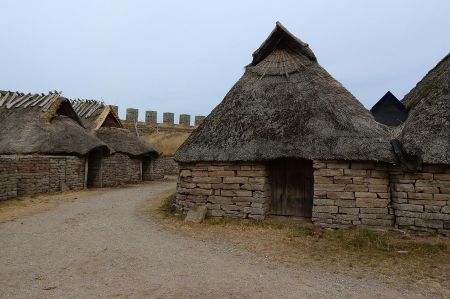 The Tolistobogians had settled along the river Sangarios to the west, the two most famous places where the Tolistobogians settled were Gordion and Pessinus. Both places were sites of important sanctuaries of the time. The Tectosages use the region around Ankara as a settlement area, which was then called Ankyra. The settlement area of the Trokmer lay further to the east on the river Halys, which is now called Kizilirmak. The capital of the Trokmer was Tavium.
The Tolistobogians had settled along the river Sangarios to the west, the two most famous places where the Tolistobogians settled were Gordion and Pessinus. Both places were sites of important sanctuaries of the time. The Tectosages use the region around Ankara as a settlement area, which was then called Ankyra. The settlement area of the Trokmer lay further to the east on the river Halys, which is now called Kizilirmak. The capital of the Trokmer was Tavium.
In addition to a little cattle breeding and a small cultivation of field crops, which could hardly be changed due to the climatic conditions due to hot, dry summers and long, cold winters in Central Anatolia, there were only few other possibilities for livelihood. Only in the river valleys was some beekeeping possible and of course sheep farming, which provided meat, milk and wool. Even the sheep manure was used as fuel. Besides collecting olives to make oil, there were the lice of the kermes oak, which were collected and used to make dyes. There were also resourceful Galatians who could supplement their livelihood by collecting precious stones. Here it was mainly opals and smoky topaz that were coveted objects of exchange.
Tribes continued to hire themselves as mercenaries
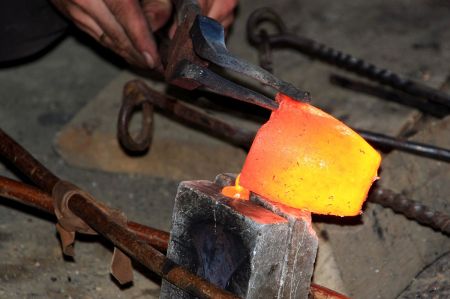 These few lines alone make it clear that there was little opportunity to improve the standard of living for the Galatians. What else could they do but continue to practice their art of war. At least they understood the business masterfully. They fought as mercenaries in almost every war in southern Europe and Asia Minor.
These few lines alone make it clear that there was little opportunity to improve the standard of living for the Galatians. What else could they do but continue to practice their art of war. At least they understood the business masterfully. They fought as mercenaries in almost every war in southern Europe and Asia Minor.
They continued to hire themselves out as mercenaries, whatever the dispute. When there was a time when there was no mercenary hire, the Galatians threatened raids and raids in order to extort tribute money. A mostly profitable business. Additional taxes were even introduced, the proceeds of which went to the Galatians to discourage their raids. The Galatians also use the control over the pilgrimage town of Pessinus to extort protection money.
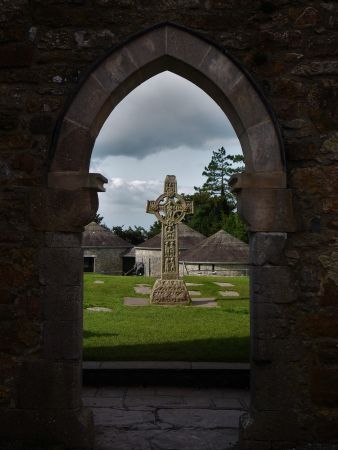 Whenever it comes to the Galatians, their origin and descent, great similarities to the Gauls are always noticeable. This does not only apply to questions of religion or jurisdiction, no, many parallels can also be found in everyday family life. With the Gauls, too, the head of the family decides on the life and death of the wife and children, an ideology that fortunately can no longer be followed today. Human sacrifices were still common among both the Gauls and the Galatians. This is also evident in the existence of the Drunemeton, the rite to the "oak grove", which was used both as a meeting place and for performing ritual procedures. Here a reference to the Gallic "nemeton" in the Karnutenwald is clearly recognizable. The same applies to the Gallic hooded demon "Genius cucullatus", which finds its counterpart in the healing god Telesphorus as the "completer". Celtic epithets of Greek gods, which were also known to the Gauls, appear in two inscriptions found near Ankara. There are also amazing parallels in the naming of the Tetrarchs, such as the Gallic Deiotaros as "bull of heaven" with Brogitaros "bull of the land" among the Galatians. Both point to the bull cult of the ethnic groups.
Whenever it comes to the Galatians, their origin and descent, great similarities to the Gauls are always noticeable. This does not only apply to questions of religion or jurisdiction, no, many parallels can also be found in everyday family life. With the Gauls, too, the head of the family decides on the life and death of the wife and children, an ideology that fortunately can no longer be followed today. Human sacrifices were still common among both the Gauls and the Galatians. This is also evident in the existence of the Drunemeton, the rite to the "oak grove", which was used both as a meeting place and for performing ritual procedures. Here a reference to the Gallic "nemeton" in the Karnutenwald is clearly recognizable. The same applies to the Gallic hooded demon "Genius cucullatus", which finds its counterpart in the healing god Telesphorus as the "completer". Celtic epithets of Greek gods, which were also known to the Gauls, appear in two inscriptions found near Ankara. There are also amazing parallels in the naming of the Tetrarchs, such as the Gallic Deiotaros as "bull of heaven" with Brogitaros "bull of the land" among the Galatians. Both point to the bull cult of the ethnic groups.
Gallatic queen Kamma also became the priestess of the Artemis cult
 As history progressed, however, the Galatians also adopted some of the cults prevalent here. The Pessinuntian cult of the gods of Cybele and Attis should be mentioned here in particular. The Galatian tetrarch Brogitaros bought the priesthood of Pessinus at great expense. Above all, the Galatians also worshiped Artemis, so the Gallatic queen Kamma also became the priestess of the Artemis cult. From the Trokmer capital Tavium we know today that there was also a huge statue of Zeus there. As so often in history, as with the Romans, there were always doubts about their own faith. If the Greeks had worshiped certain gods, it was certainly not wrong for a Roman to adopt a god with a different name. Not a bad decision and a certain certainty that I didn't make a mistake. The Galatians must have had the same thoughts in their heads.
As history progressed, however, the Galatians also adopted some of the cults prevalent here. The Pessinuntian cult of the gods of Cybele and Attis should be mentioned here in particular. The Galatian tetrarch Brogitaros bought the priesthood of Pessinus at great expense. Above all, the Galatians also worshiped Artemis, so the Gallatic queen Kamma also became the priestess of the Artemis cult. From the Trokmer capital Tavium we know today that there was also a huge statue of Zeus there. As so often in history, as with the Romans, there were always doubts about their own faith. If the Greeks had worshiped certain gods, it was certainly not wrong for a Roman to adopt a god with a different name. Not a bad decision and a certain certainty that I didn't make a mistake. The Galatians must have had the same thoughts in their heads.
Ancient records by writers speak of human and animal sacrifices. There are reports that the Galatians sacrificed prisoners of war, which has also been confirmed by excavations by well-known archaeologists. In addition to people, horses, cattle and especially dogs were also sacrificed. In accordance with an old Gallic custom, the Galatians also went into battle completely naked. This is also expressly described in ancient records, especially from around 189 BC.
Cicero also reports about his client, the Galatian king Deiotaros, that he undertook no activities without first “professionally” observing the flight of birds, and even trips that had already begun were broken off if there were unfavorable signs from the flight of birds.
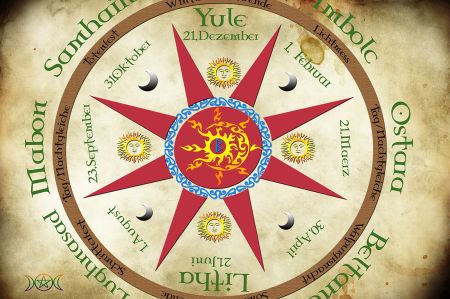 However, with the appearance and missionary work of the Apostle Paul, the Galatians were also the first Celtic ethnic group to convert to the Christian faith. Paul of Tarsus described this at length in the Galatians.
However, with the appearance and missionary work of the Apostle Paul, the Galatians were also the first Celtic ethnic group to convert to the Christian faith. Paul of Tarsus described this at length in the Galatians.
Scientists are now certain that the Galatian language was also originally a Celtic language, the parallels in names, tribes and localities are too clear. Even the scholar Jerome said around 400: "The Galatians have their own language, in addition to Greek, which all people in the East speak, quite similar to that of the Treverians". Galatian was consequently a Gaulish dialect, which can be unequivocally interpreted as coming from Gaulish through Galatian proper names: "Deiotaros", the Divine Bull; "Brogitaros", the national bull; "Sinorix", the Old King; "Eposognatos", the horse confidante; "Eporedorix", the horse-chariot king. The same applies to some place names that are typically Celtic: "Ecobriga, Drynemeton", Sacred Oak Grove and "Vindia" as white.
Surely there will be more insights into the ethnic groups and their origins in further research. People have always been willing to leave their homeland for a better future or a better life. The Celts and Galatians also belonged to this group.
Please read as well:
Rafting on the Alara River between Eskibag and Alarahan
Nürnberg - durch die Altstadt bei Nacht
-
 Monuments of Celtic or Galater people
Monuments of Celtic or Galater people
Monuments of Celtic or Galater people
Monuments of Celtic or Galater people
-
 Monuments of Celtic or Galater people
Monuments of Celtic or Galater people
Monuments of Celtic or Galater people
Monuments of Celtic or Galater people
-
 Monuments of Celtic or Galater people
Monuments of Celtic or Galater people
Monuments of Celtic or Galater people
Monuments of Celtic or Galater people
-
 Monuments of Celtic or Galater people
Monuments of Celtic or Galater people
Monuments of Celtic or Galater people
Monuments of Celtic or Galater people
-
 Monuments of Celtic or Galater people
Monuments of Celtic or Galater people
Monuments of Celtic or Galater people
Monuments of Celtic or Galater people
-
 Monuments of Celtic or Galater people
Monuments of Celtic or Galater people
Monuments of Celtic or Galater people
Monuments of Celtic or Galater people
https://www.alaturka.info/en/history/antiquity/5599-the-tribal-organization-of-the-celts-in-asia-minor?tmpl=component&print=1&layout=default#sigProId0fc208a00f
